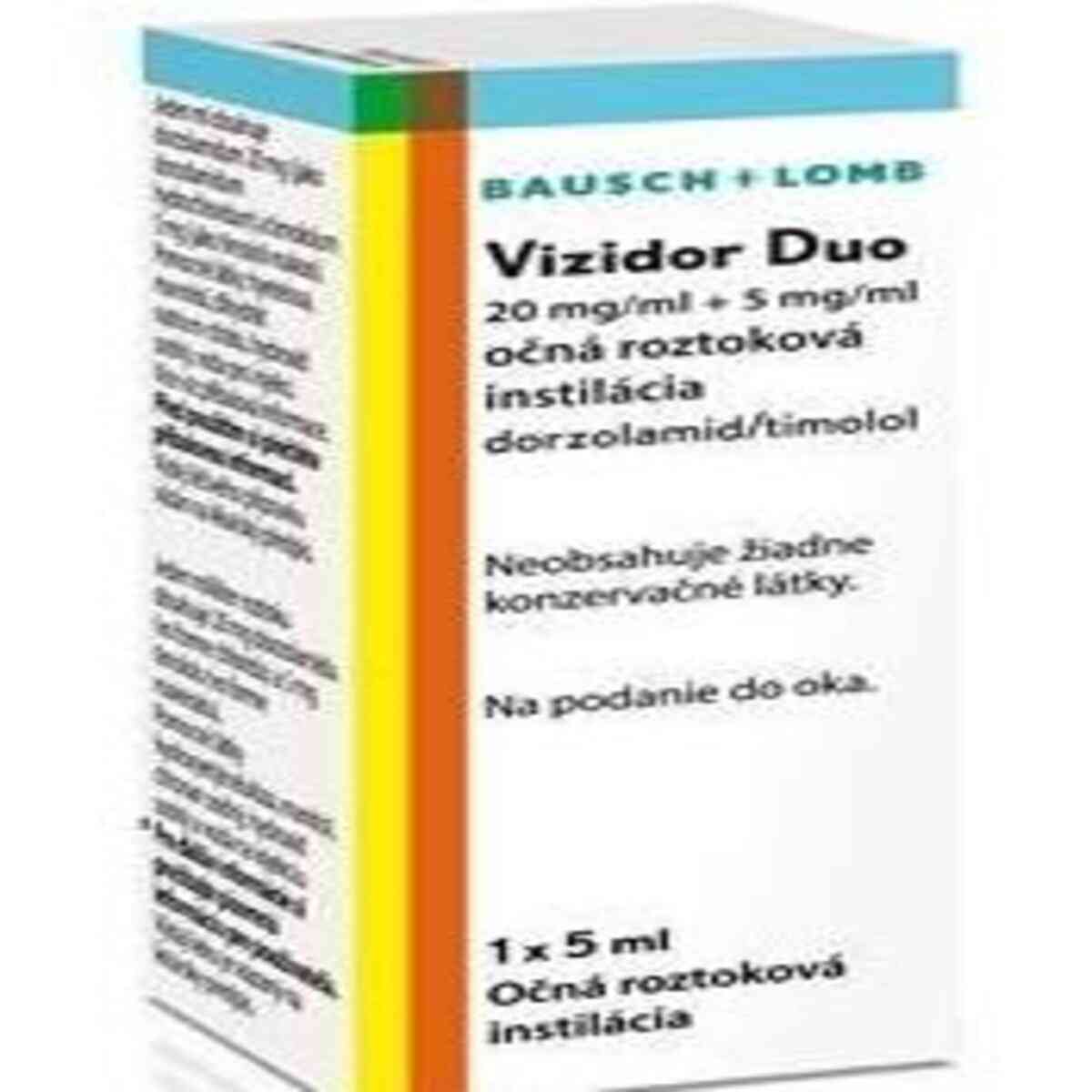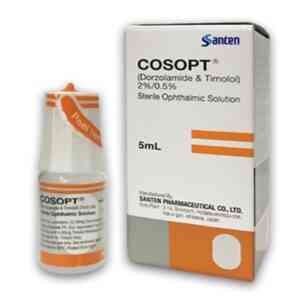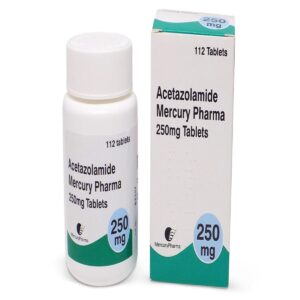Description
Dorzolamide Timolol Preservative Free Eye Drops, 5ml
WHAT DORZOLAMIDE TIMOLOL Preservative Free EYE DROPS IS AND WHAT IT IS USED FOR?
Dorzolamide Timolol Preservative Free Eye Drops ( Vizidor Duo Eye Drops ) contains two medicines: dorzolamide and timolol.
- Dorzolamide belongs to a group of medicines called “carbonic anhydrase inhibitors”.
- Timolol belongs to a group of medicines called “beta blockers”.
These medicines lower the pressure in the eye in different ways.
Vizidor Duo Eye Drops is prescribed to lower raised pressure in the eye in the treatment of glaucoma when beta-blocker eye drop medicine used alone is not adequate.
Dorzolamide Timolol Preservative Free Eye Drops is the alternative to Cosopt IMulti eye drops (generic version)
Dorzolamide Timolol Preservative Free Eye Drops, 5ml is Preservative Free
Dorzolamide Timolol Preservative Free Eye Drops Brand name is Vizidor Duo Eye Drops
What is Glaucoma?
Glaucoma is a common eye condition where the optic nerve, which connects the eye to the brain, becomes damaged.
It’s usually caused by fluid building up in the front part of the eye, which increases pressure inside the eye.
Glaucoma can lead to loss of vision if it’s not diagnosed and treated early.
It can affect people of all ages, but is most common in adults in their 70s and 80s.
Glaucoma does not usually cause any symptoms to begin with.
It tends to develop slowly over many years and affects the edges of your vision (peripheral vision) first.
For this reason, many people do not realise they have glaucoma, and it’s often only picked up during a routine eye test.
If you do notice any symptoms, they might include blurred vision, or seeing rainbow-coloured circles around bright lights.
Both eyes are usually affected, although it may be worse in 1 eye.
Very occasionally, glaucoma can develop suddenly and cause:
Visit an opticians or a GP if you have any concerns about your vision.
If you have glaucoma, early diagnosis and treatment can help stop your vision getting worse.
Without treatment, glaucoma can eventually lead to blindness.
If you develop symptoms of glaucoma suddenly, go to your nearest eye casualty unit or A&E as soon as possible.
This is a medical emergency that may require immediate treatment.
There are several different types of glaucoma.
The most common is called primary open angle glaucoma. This tends to develop slowly over many years.
It’s caused by the drainage channels in the eye becoming gradually clogged over time.
Other types of glaucoma include:
- acute angle closure glaucoma – an uncommon type caused by the drainage in the eye becoming suddenly blocked, which can raise the pressure inside the eye very quickly
- secondary glaucoma – caused by an underlying eye condition, such as inflammation of the eye (uveitis)
- childhood glaucoma (congenital glaucoma) – a rare type that occurs in very young children, caused by an abnormality of the eye
Glaucoma can occur for a number of reasons.
Most cases are caused by a build-up of pressure in the eye when fluid is unable to drain properly.
This increase in pressure then damages the nerve that connects the eye to the brain (optic nerve).
It’s often unclear why this happens, although certain things can increase the risk, including:
- your age – glaucoma becomes more common as you get older
- your ethnicity – people of African, Caribbean or Asian origin are at a higher risk
- your family history – you’re more likely to develop glaucoma if you have a parent or sibling with the condition
- other medical conditions – such as short-sightedness, long-sightedness and diabetes
It’s not clear whether you can do anything to prevent glaucoma, but having regular eye tests should pick it up as early as possible.
TESTS FOR GLAUCOMA
Glaucoma can usually be detected during a routine eye test at an opticians, often before it causes any noticeable symptoms.
The tests are carried out in the opticians by an optometrist.
You should have a routine eye test at least every 2 years.
Find out if you’re eligible for free NHS eye tests
Several quick and painless tests can be carried out to check for glaucoma, including vision tests and measurements of the pressure inside your eye.
If tests suggest you have glaucoma, you should be referred to a specialist eye doctor (ophthalmologist) to discuss treatment.
It’s not possible to reverse any loss of vision that occurred before glaucoma was diagnosed, but treatment can help stop your vision getting worse.
The treatment recommended for you will depend on the type of glaucoma you have, but the options are:
- eyedrops – to reduce the pressure in your eyes
- laser treatment – to open up the blocked drainage tubes or reduce the production of fluid in your eyes
- surgery – to improve the drainage of fluid
You’ll also probably need regular appointments to monitor your condition and check the treatment is working.
Dorzolamide Timolol Preservative Free Eye Drops Reviews
After using Dorzolamide Timolol Preservative Free Eye Drops, it’s helpful to let others know about your experience. Reviews of an item help other users know that medicines received have helped the condition it is claimed for, how well the treatment worked or any issues to be aware of. We invite our users to leave a review of both their treatment and of the service provided. Click on the reviews tab to see if there has been feedback on this item.
Price of Dorzolamide Timolol Preservative Free Eye Drops in UK
Where to buy Dorzolamide Timolol Preservative Free Eye Drops
Dorzolamide Timolol Preservative Free Eye Drops is available to buy with a prescription at Dock Pharmacy Essex UK, UK Online Pharmacy.
 +44 (0) 1375 846 316
+44 (0) 1375 846 316






Tamas Fekete (verified owner) –
Very good product
Tamas Fekete (verified owner) –
Julie Cutbush (store manager) –
Dear Tamas,
Thank you for your 5 star rating.
Julie Cutbush (store manager) –
Dear Tamas,
Thank you for your positive review. We are happy to hear.